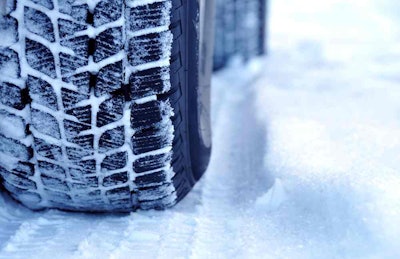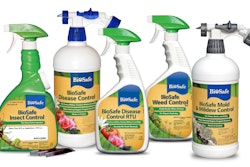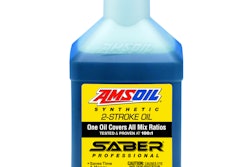
Before landscapers hit the road tackling winter weather like snow and ice, they should be prepared physically and intellectually.
Believe it or not, it’s not always about how skillful a driver can be on the road when it comes to hazardous conditions, according to our sister site, Hard Working Trucks.
Landscapers need to prep each vehicle in the fleet and educate every driver on how to deal with these types of conditions.
1. Traction first
The first — and only — connection between your truck and the road is a narrow patch of rubber at the bottom of each tire. Tires with worn treads, or running mud tires with heavy lugs or “all-season” tread patterns can spell disaster when heavy rains or snow/ice covers the road surface. Of all times during the year when tires should be their best condition it’s winter. Check tread depths and replace worn out tires. Check tire pressures. Select tires appropriate for the expected driving and load conditions. Run dedicated snow tires in snow country. Slow down when there’s standing water or snow. Leave greater stopping distances between your truck and the vehicle you are following.
2. Replace tires in sets
Tires are expensive. So the typical reaction of many landscapers on tight budgets is to skimp where they can and replace just the bad tire(s). Wrong move. Replace tires in matched sets–at all four corners. Putting new tires on the rear causes a vehicle to understeer on slick surfaces as the rear tires “push” the fronts. Likewise, new tires on the front and old tires in the rear causes the rear tires to break loose on slippery surfaces. Put on four new tires and rotate very 3,000-5,000 miles to maximize even wear.
3. Control trailer skid
Most of the winter driving tips and techniques concentrate on making sure the vehicle is in good working order; use snow tires; slow down; and do all your braking and accelerating in a straight line. But what do you do during a “trailer event” when the trailer starts jackknifing? Don’t brake. Don’t turn into the skid. Instead, add power and drive on until the trailer straightens–then ease on the brakes. Attend a winter trailering school to get seat time in a controlled environment.
4. Light the road
Light up the road, not on-coming drivers. Auxiliary driving and fog lights make it easier and safer for driving in inclement weather at night. Better vision, better reaction time. But be sure the lights are adjusted so they don’t blind on-coming traffic. Choose your fog lights and driving lights carefully and adjust to maximize their performance on and off-road.
5. Have a clear view
Windshield wipers and windshields take a beating in the winter. Road grime, road treatment residues, sand, dirt and other elements coat windshields and damage the edges of wiper blades so they don’t clear a clean path with each swipe. Replace wipers blades every winter. Use silicone-impregnated or heated wipers and treat the windshield with a specialty cleaner to ensure the best vision. Cleaning the windshield and wiper blade edges should be done several times a month in the winter.
6. Winch safely
Breaking out the winch control and hooking up a cable to get yourself or another motorist out of a stuck situation isn’t that common. But when it does happen, be sure you know how to winch safely, the safe zones, and how to maximize winch pull to save on battery drain. Never attach winch cable to tow ball, bumper, or suspension components.
7. Upgrade headlight bulbs
Reaction time is directly related to your vision; the quicker you see a problem, the faster you react and the shorter the stopping distance. One way to increase vision is upgrading the headlight bulbs. Headlight bulbs degrade with time, especially with older halogen bulbs. Sylvania and other manufacturers offer high-performance replacement bulbs that are street legal yet far brighter (whiter) than stock.










